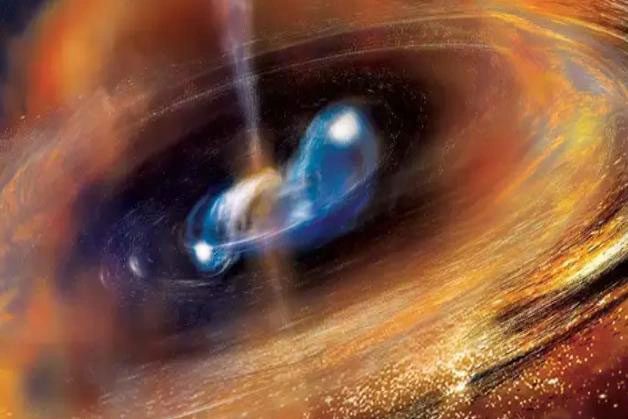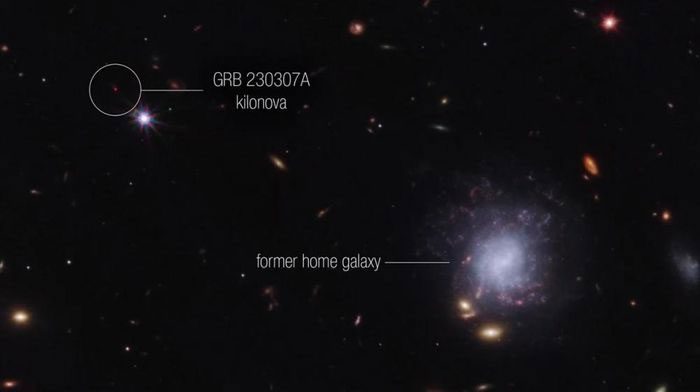Using the James Webb Space Telescope (JWST), astronomers have detected an exceptionally bright gamma-ray burst (GRB), known as a kilonova. This event is a violent collision between two neutron stars.
This rare cosmic explosion, termed a kilonova, is so powerful that it can produce gold, platinum, and uranium in the universe.

Scientists say JWST has detected the signal of a kilonova for the first time – (Image credit: NASA).
The Death of Two Neutron Stars
The kilonova explosion occurs when two neutron stars—supermassive stars that have collapsed—orbit each other and eventually collide.
This collision creates a powerful burst known as a gamma-ray explosion, followed by a wave of ultraviolet, infrared, and X-ray energy.
This particular explosion has been designated by NASA as GRB 230307A.
The energy released by the explosion can be detected by remote sensors on Earth and in space.
Gold Forged from Stars
Virtually all elements are created within stars, as the Big Bang (the physical theory explaining how the universe expands at high density and temperature) only produced helium, hydrogen, and lithium.
More complex elements like carbon and oxygen must be formed from fusion reactions occurring at millions of degrees generated by stars.
However, heavy elements like gold and uranium require extremely harsh conditions to form. These conditions only arise in very limited scenarios, such as when two neutron stars collide.
Theoretically, these elements are created through a process called “neutron capture” or the r-process, which allows atomic nuclei to capture neutrons, resulting in the formation of new and heavier elements, including gold, platinum, and uranium.
The r-process can only occur under extreme and intense conditions, such as those found around colliding neutron stars.

Astronomers used the James Webb Telescope to detect a bright gamma-ray explosion. (Image: NASA).
The research team utilized the James Webb Telescope to track the journey of neutron stars before they exploded. They are two stars within a binary system located in a spiral galaxy. One of these stars exploded in a supernova, leaving behind a neutron star, and a similar fate awaited the other star.
Astronomers are trying to identify the chemical elements produced in the universe over decades. The detection of more kilonova explosions in the future with sensitive telescopes like James Webb and the Nancy Grace Roman Space Telescope, which is planned for launch in 2027, may provide insights into how heavy elements are created and released during these rare explosions.
Researchers are also looking for additional mergers that generate gamma-ray bursts to determine their causes and whether there is any connection to the elements produced in this process.


















































